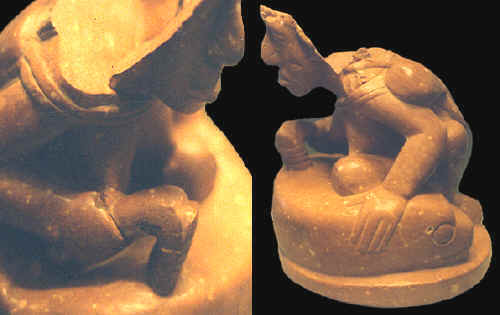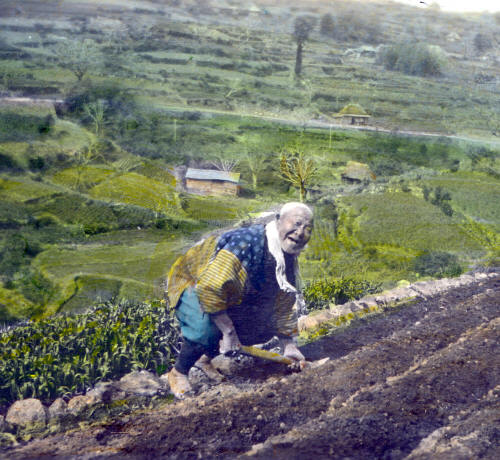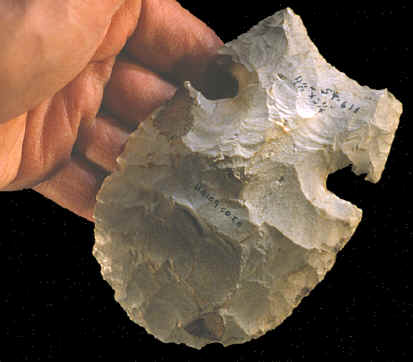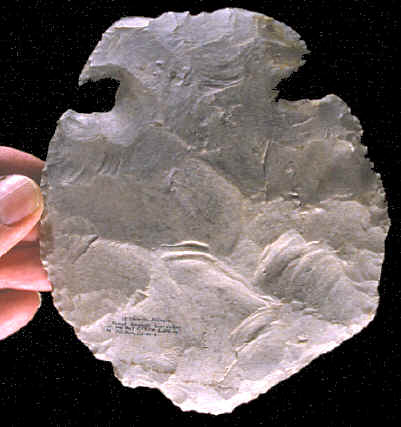|
|
|
In a study of Mississippian hoes conducted by Howard Winters, he was able to measure 292 notched hoes. Over 90% of them were made of Mill Creek chert. There were 273 Mill Creek chert hoes that measured between 13 inches (33 cm) long for the largest and 3 inches (7.5 cm) long for the smallest example. The 19 Kaolin notched hoes varied in size from 3 inches (7.5 cm) to 7 1/16 inches (18 cm) long. |
|
|
|
|
Notched hoes were used to cultivate the soil. Evidence of this can be seen on the edges which have a very high surface polish. These edges appear as though a coating of clear nail polish has been applied. The polished surface is caused from the cutting of plants that form a build up of a material called opal phytolith. Some of the agricultural products these hoes would have been used to cultivate were corn, beans and squash. |
|
|
|
|
Notched and unnotched hoes were continually resharpened when their edges became rounded and dulled from use. The resharpening flakes are often found in today's cultivated fields in what may have once been ancient field areas. These resharpening flakes are very distinctive because one side will have a mirror polished surface. Some notched hoes are also believed to have been made from larger broken unnotched hoes. Howard Winters writes that "many of these (St. Clair side-notched hoes) seem to have been secondary products manufactured from larger simple types, although others seem to have been primary products." |
|
|
|
|
St. Clair side-notched hoes represent one of the most impressive stone tools that were produced by Mississippian craftsmen. Without the great numbers of hoes that were manufactured in the Mill Creek quarries, Cahokia may not have been the great city that it was. The availability and utilization of natural resources was just as important in ancient times as they are in today's modern society. |
|
|
"REFERENCES" 1895,
Clodd, Edward, "Primitive Man," p. 150. |
|



